The Bundeskunsthalle in Germany is holding an exhibition about modern art in the context of the First World War.
At the beginning of the twentieth century, a lively exchange of artistic ideas and expressions crossed national borders in Europe, with the Bundeskunsthalle highlighting that Paris was the centre of the new art, yet it found its most enthusiastic early advocates in Germany.
More than 300 works by 60 artists will be on display until the 23rd February 2014.
Sections
The exhibition will be presented in five different sections:
Before 1914
The first section of the exhibition investigates the way different artists related to the war. Even before 1914, artists in Germany and Austria – for example Alfred Kubin, Ludwig Meidner and Oskar Kokoschka – had given visual expression to disturbing apocalyptic thoughts.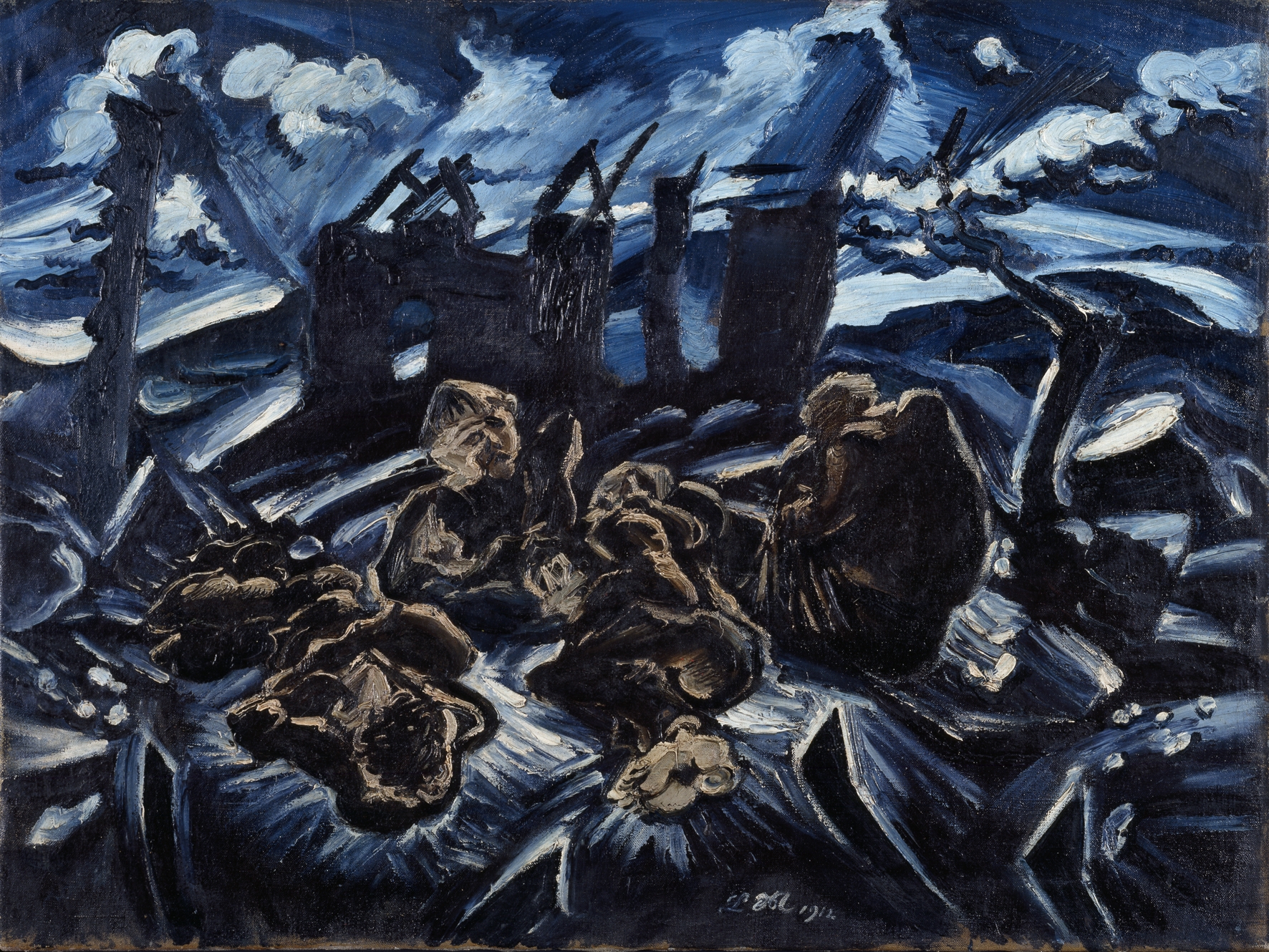 Ludwig Meidner, ‘Spent’ (Homeless), 1912 Oil on canvas © Museum Folkwang
Ludwig Meidner, ‘Spent’ (Homeless), 1912 Oil on canvas © Museum Folkwang
Other artists like Ernst Barlach, Franz von Stuck, Wassily Kandinsky, Franz Marc, Luigi Russolo or Gino Severini indulged in manifold images of fighting.
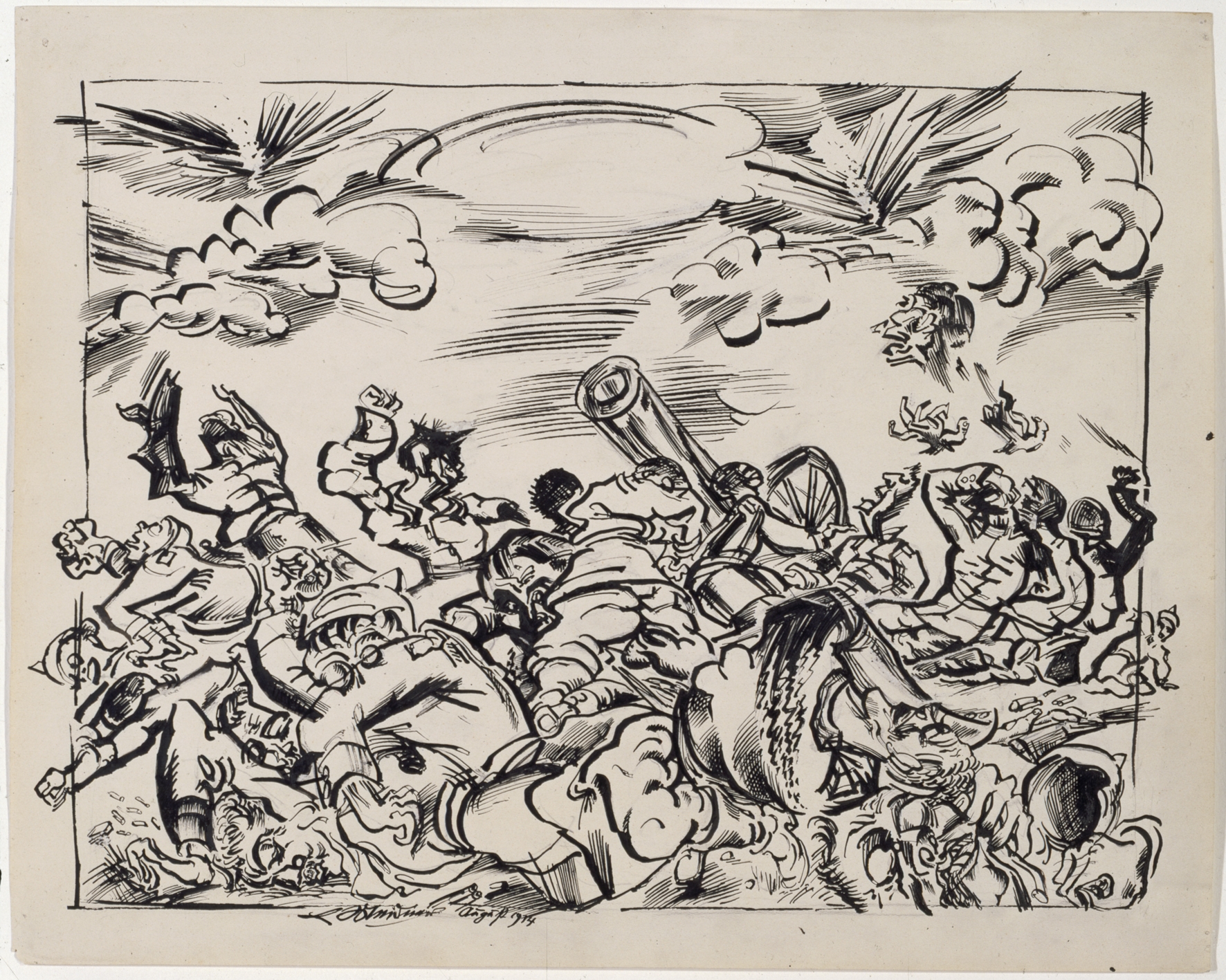 Ludwig Meidner, The cannon (III), 1914 reed pen and ink on paper Winfried Flammann, Karlsruhe
Ludwig Meidner, The cannon (III), 1914 reed pen and ink on paper Winfried Flammann, Karlsruhe
From the Studio to the Battlefield
The collapse of international artistic exchange and collaboration dealt Modernism a decisive blow. Many artists left their studios for the battlefields, some – among them Umberto Boccioni, Franz Marc, August Macke, Henri Gaudier-Brzeska and Albert Weisgerber – never returned.
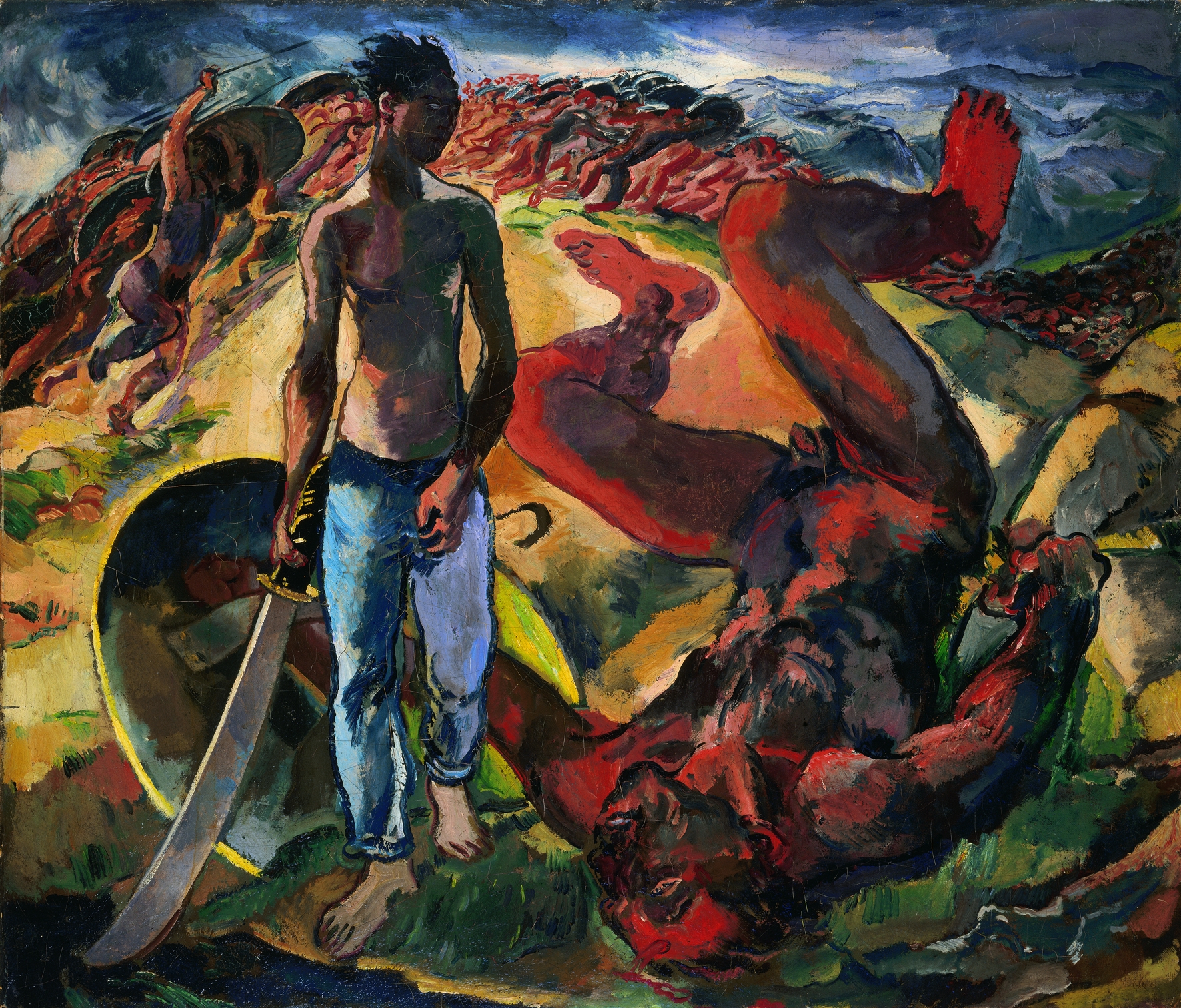 Albert Weisgerber, ‘David and Goliath’, 1914, oil on canvas Saarland Cultural Heritage Foundation, Saarland.Museum, Saarbrücken
Albert Weisgerber, ‘David and Goliath’, 1914, oil on canvas Saarland Cultural Heritage Foundation, Saarland.Museum, Saarbrücken
International artists’ groups disbanded as artists became ‘enemy aliens’ to one another and were often faced with no other alternative but returining to their country of origin.
Kandinsky went back to Russia, Kahnweiler was forced to leave France, Chagall could not return to Paris, the Delaunays fled to neutral Spain etc. In 1915 Marcel Duchamp, who had gone to New York, wrote ‘Paris is like a deserted mansion. Her lights are out. The friends are all away at the front. Or else they have already been killed.’
‘Avant-garde in uniform’
While artists such as Franz Marc, André Mare and Dunoyer de Segonzac used avant-garde forms in the design of military camouflage, Kasimir Malevich in Russia, Raoul Dufy in France, Max Liebermann in Germany produced patriotic pictures.
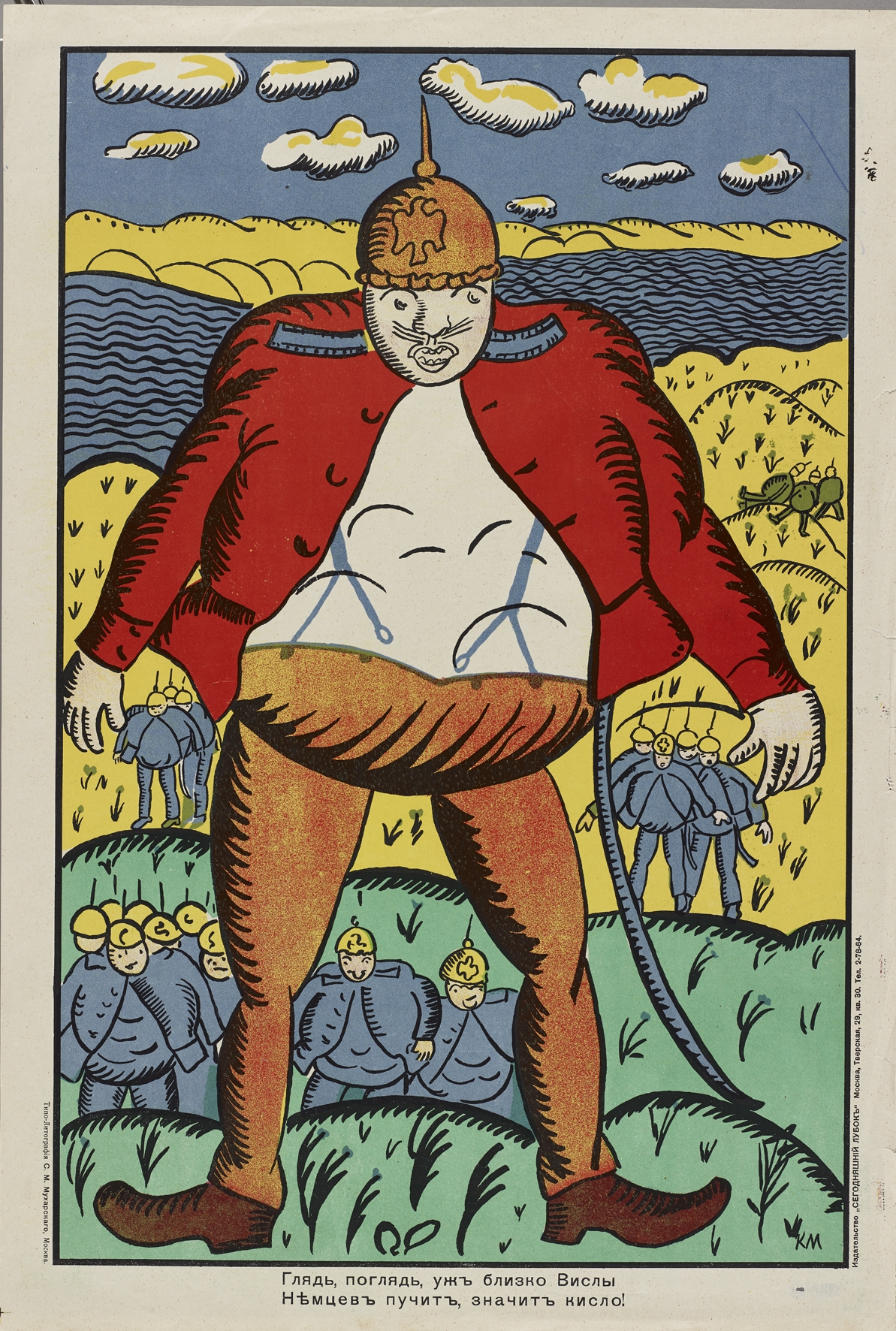 Kasimir Malevich ‘Look, look yet, the Vistula is already so close …’, 1914, colour lithograph © Deutsches Historisches Museum Berlin
Kasimir Malevich ‘Look, look yet, the Vistula is already so close …’, 1914, colour lithograph © Deutsches Historisches Museum Berlin
Severe Traumatisation
The third section of the exhibition looks at the traumatisation of many artists within months of the outbreak of the war. The experience of suffering and destruction led painters and graphic artists such as Max Beckmann, Ernst Ludwig Kirchner, Otto Dix or Egon Schiele to poignant new themes and novel techniques. It was during the first year of the war that Franz Marc collected the motifs for a future pictorial world. Félix Vallotton, Frans Masereel and Willy Jaeckel created graphic series.
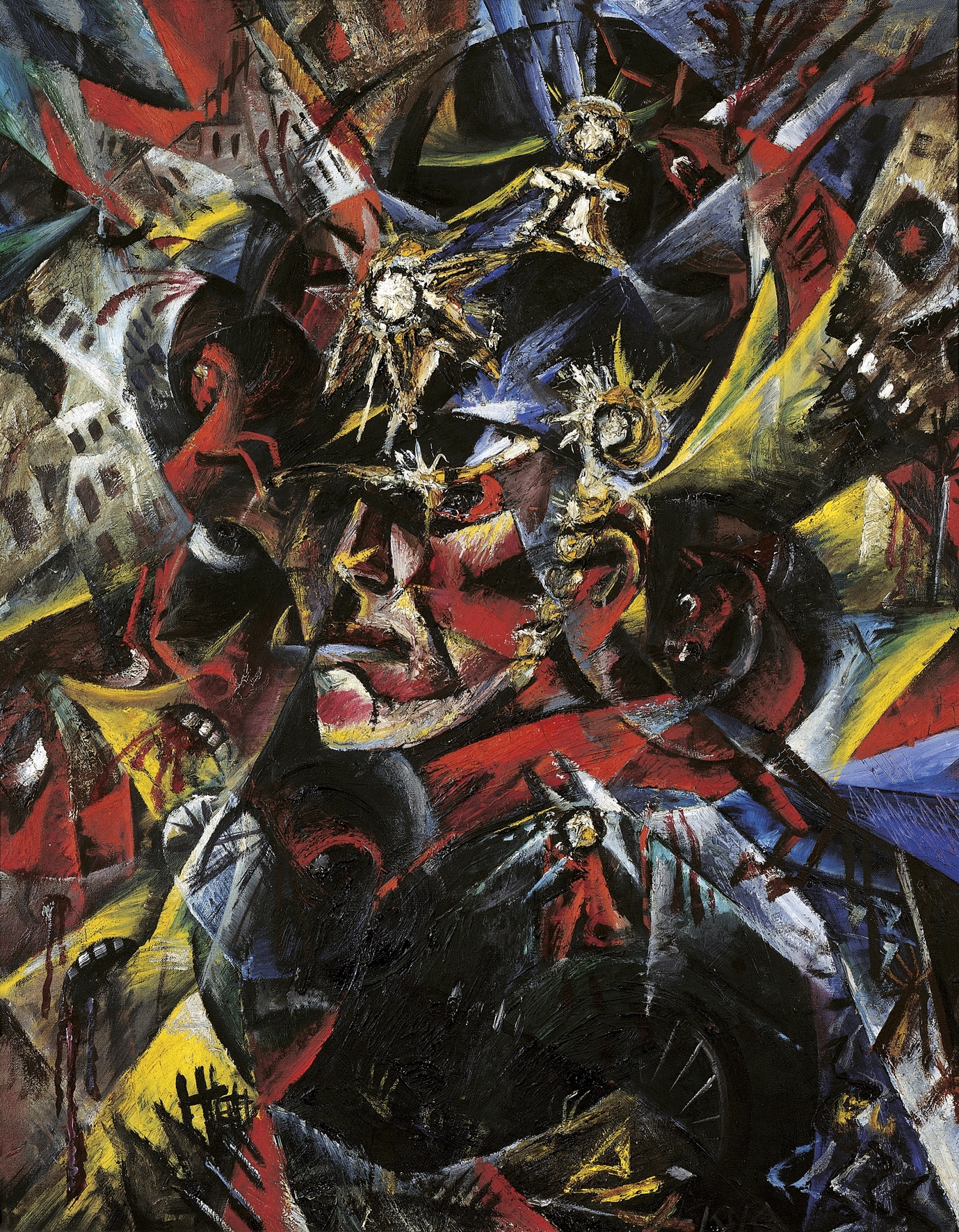 Otto Dix, ‘Self-Portrait as Mars’, 1915, oil on canvas © Urban collections Freital, Castle Burgk
Otto Dix, ‘Self-Portrait as Mars’, 1915, oil on canvas © Urban collections Freital, Castle Burgk
Prospects for the 20th century 1915–1918
In 1916 a group of émigré artists in neutral Switzerland founded the Cabaret Voltaire, the birthplace of Dada, theinternational protest movement, which defined itself via its ‘anti’ stance. It was during the war – outside its direct sphere of influence – that important perspectives for 20th century art were developed.
Source: Bundeskunsthalle press release
Posted by: Daniel Barry, Centenary News
